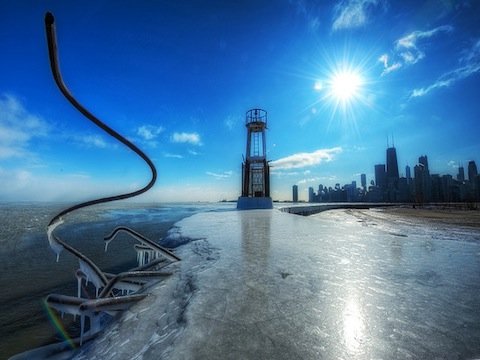
Insight in the Mediterranean area could reveal us relevant information about what happened to the climate over the last five million years, during the onset of Northern Hemisphere glaciations. This is the main topic of a paper written by CMCC’s researchers Florence Colleoni, Simona Masina, Alessandra Negri and Alice Marzocchi now published in the journal Earth and Planetary Science Letters with the title: “Plio–Pleistocene high–low latitude climate interplay: A Mediterranean point of view”. According to authors, results confirm that the Mediterranean is an ideal site to study the interplay between high and low latitude climates over long timescales.
The abstract of the paper:
The high–low latitude climate interplay during the Plio–Pleistocene global cooling is not yet well understood.
Insight on the Mediterranean region can provide some clues about past significant climate changes since the basin reflects the climate dynamics of both high-latitude and low-latitude regions, being connected to the North Atlantic and subjected to monsoon influence. Here we shade light on this connection problem by performing a spectral analysis on an Eastern Mediterranean stack of planktonic records spanning the last 5 Ma and by further comparing it to North Atlantic and Pacific deep- and surface-water records. Our main conclusion is that the Mediterranean detected the main global climate transitions over the last 5 Myr although sapropel depositions indicate that it remained influenced by the African summer monsoon during the whole interval. Our analysis reveals that until 2.2 Ma the Mediterranean planktonic record is driven by regional processes dominated by precession.
The progressive emergence of the 41-kyr frequency in the Mediterranean records around 2.8 Ma suggests that, since this date, the Mediterranean was more and more affected by the high-latitude climate dynamics forcing than by the low-latitude one. Moreover, during the ongoing Plio–Pleistocene cooling, the 41-kyr frequency signal in the Mediterranean records anticipated high-latitude deep-water response to the intensification of the Northern Hemisphere Glaciations (NHG) and lagged the signal in tropical latitudes. Finally, toward 1.2 Ma the results suggest that the progressive shift from the 41-kyr to the 100-kyr frequency was led by the northern high latitudes. Overall, our results confirm that the Mediterranean is an ideal site to study the interplay between high and low latitude climates.
The full version of the paper is available here:
Image credits: CC from kern.justin at Flickr
Read more from Climate Science and Policy:
- The Three Million Years Ago Dilemma: the Beginning of the Ice Ages, Florence Colleoni (CMCC) looks at paleoclimate processes and focuses hypothesis about the Pliocene period, when the continental configuration was almost similar to present-day and when, until 3 Million years ago, the climate was warmer than today.
- Discovering The Great Warming: Lessons from The Ancient Earth (video), archeologist Brian Fagan, author of The Great Warming Climate Change and The Rise and Fall of Civilizations, explains how ancient Climate Change affected the Earth in the past and how some civilizations (such are the Pueblo Indian from Chaco Canyon, New Mexico, in the 11th century, or the Egyptian civilization in 2180 BC) were able to adapt to the changed climate while other civilizations perished under the effect of a silent elephant walking across centuries.


